In This Issue:
Introducing Small Game Field Notes
Thank you for subscribing and welcome to the inaugural issue of Small Game Field Notes! Charged with the management of all waterbird, waterfowl, and upland game bird species in Texas, the Small Game Program works closely with agency staff, private landowners, and an array of conservation partners across the state. In this quarterly newsletter we plan to provide updates and perspectives on upland and migratory game bird management in Texas, whether it be wild turkey restoration in east Texas or waterfowl populations trends in the Panhandle. We hope you enjoy!
Shaun Oldenburger, Small Game Program Director
Flyway Report - Webless Bird Hunting Forecast
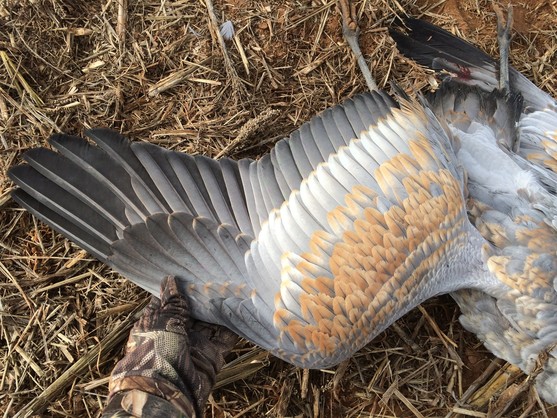 Keep those shotguns out! Despite a slow, hot September, October cold fronts are finally beginning to push migrating doves into Texas, and plenty of other migratory bird hunting opportunities are just around the corner. Sandhill crane harvest and hunter numbers in Texas are on the rise, currently comprising nearly 70% of the US totals. Crane season kicks off Oct. 26 in Zone A, and with a current population estimate at just under 1 million, the season should be excellent. Snipe season also gets underway on Oct. 26; these quick and agile shorebirds provide fun and challenging wing-shooting. Hunters in the eastern half of the state can hit the woods in search of the wily and wary American woodcock beginning Dec. 18. For those on the coast, rail, gallinule, and moorhen seasons start up again on Nov. 2.
By: Owen Fitzsimmons, Webless Migratory Game Bird Program Leader
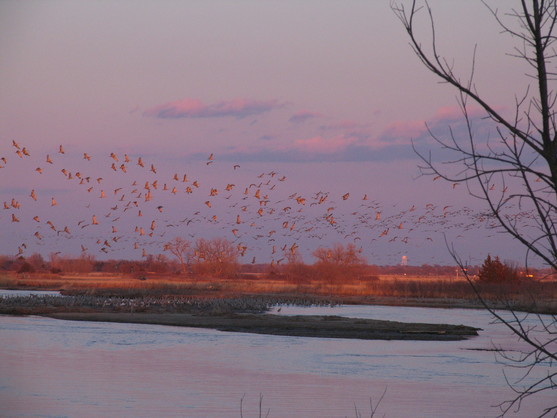 Quail Roadside Counts and Hunting Forecast - Looking Ahead
Annual Quail Roadside Counts are used by TPWD to assess broad, regional trends for quail species across the state. Reported as the number of birds seen per route, this index value helps guide the agency’s management focus and provide a forecast for the upcoming hunting season. While still recovering from drought conditions in 2018, favorable weather across the state this year resulted in a bump in quail numbers. This news represents a step in the right direction for quail populations and should equate to average hunting conditions across the state. For more information, check out our Quail Hunting Forecast for 2019-20!
By: Robert Perez, Upland Game Bird Program Leader
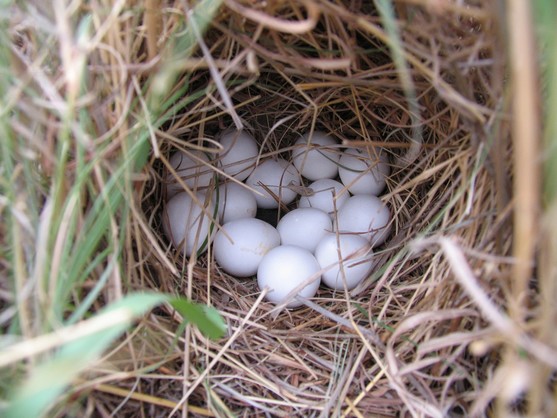 Extended Texas Waterfowl Hunting Forecast
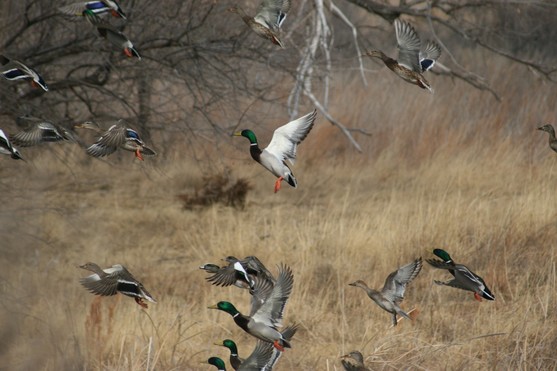 Habitat conditions in eastern North and South Dakota this summer were as good as most people have ever seen. Much of the landscape was not farmed or plowed due to wet conditions, leaving the majority of the landscape idle and available, resulting in excellent nesting conditions for dabbling ducks. The subsequent hatch of ducklings was recently referred to as “epic” by local biologists. This production should equate to ample numbers of young and vulnerable ducks winging their way south this winter.
It seems we are always in a pattern of too much or too little rainfall here in Texas. Just last month most of the state was in a rather dry pattern. Some areas like southeast Texas and the High Plains of the Panhandle have changed drastically in just a few days. Good for ducks and geese indeed, but birds will likely be scattered in those areas when the regular season opens.
The general duck hunting season kicks off in the Texas Panhandle (High Plains Mallard Management Unit) Oct. 26-27 and resumes Nov. 1 - Jan. 26, 2020. In the South Zone, duck season runs Nov. 2 - Dec. 1 and resumes Dec. 14 - Jan. 26, 2020. Duck hunting in the North Zone opens Nov. 9 - Dec. 1 and resumes Dec. 7 - Jan. 26, 2020. Hunters are reminded that “dusky ducks” are off limits during the first five days of the season.
Before heading to the field, waterfowl hunters should also note the regulatory change for northern pintails. The bag limit for pintails was reduced to one per day from two per day due to a decrease in population.
Most of the Gulf Coast and eastern Texas remain drier than normal. Typically, when there is less water spread out across the landscape it concentrates birds in areas where hunters tend to be waiting and hunting success increases.
The extremely wet spring and summer in east Texas had rivers flooding and lakes far above conservation pool for most of the summer. This prolonged flooding unfortunately will impact the amount of terrestrial seed producing vegetation that produces the high energy foods that ducks will be seeking.
Goose hunting also kicks off Nov. 2 statewide and runs through Jan. 26, 2020 in the East Zone and Feb. 2, 2020 in the West Zone.
Quite differently from the good duck production, timing of the goose hatch and vegetation green up in the Arctic has been a few weeks off of each other for several years in a row. This mismatch once again has resulted in low gosling survival. At best we can say there will be a few more young birds in the flock this year compared to the last couple of years. Continental goose populations, especially mid-continent snow geese, are declining for the first time in a long time due to four to five consecutive years of poor gosling survival. The older and wiser birds remaining in the flock, having experienced several hunting seasons, tend to increase frustration for hunters and likely lower success.
White-fronted and small Canada geese are doing much better than their cousins, snow and Ross's geese. Hunters in the Panhandle and Rolling Plains north of Abilene should see similar strong populations and success this winter.
Late summer and early fall we saw almost zero cool fronts moving though the breeding grounds to the North, making for a frustrating teal season with a very slow and stretched out migration. At the end of teal season there were still significant concentrations of blue-winged teal remaining in the Dakotas and Nebraska. We will need a change in weather patterns soon to trigger a more pronounced migration before the regular season starts. The birds are there, they just need a good push of cold weather to get them moving soon.
Overall habitat conditions are good for ducks and duck hunters for many parts of Texas. We just need some timely cold fonts and moisture this fall, and I believe many folks will get the opportunity to enjoy the young ducks the Dakotas produced this summer.
Read the full 2019 waterfowl population status report from our partners at U.S. Fish and Wildlife Service for more information.
By: Kevin Kraai, Waterfowl Program Leader
Bermudagrass to Natives - A Path Forward
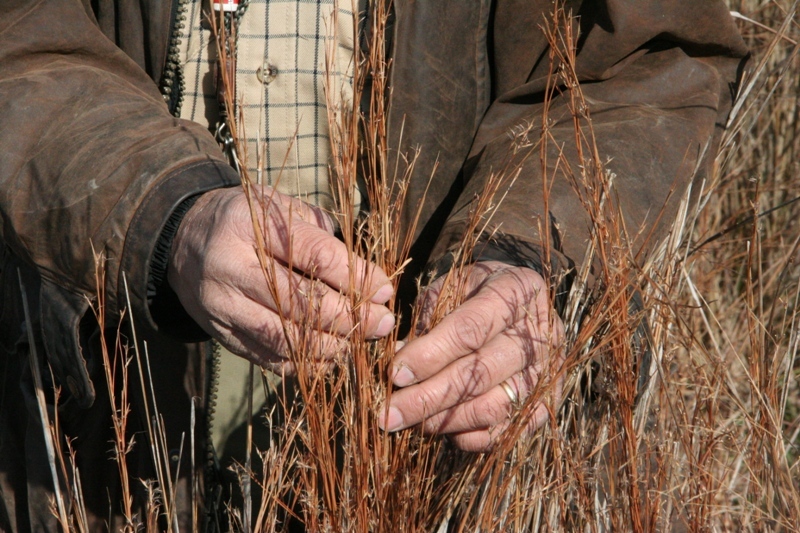 Bermudagrass is a common non-native grass in Texas planted primarily for livestock forage production and utilized for erosion control. However, despite these practical uses, monocultures offer little useable space (e.g., cover/shelter, food) for upland game birds. In 2015, TPWD partnered with Tarleton State, Texas A&M AgriLife Extension, and Texas A&M University-Kingsville to fund research aimed at examining combinations of treatments to replace bermudagrass with native warm-season grasslands. Understanding site and weather conditions vary throughout the state, research took place in multiple eco-regions including the Cross Timbers, Blackland Prairies, Post-Oak Savannah and Coastal Gulf Prairies.
After multiple years of research, results were consistent across eco-regions and repeated glyphosate applications at high rates after mowing were the most effective range wide. The most effective treatment was to cut, bail, and remove bermudagrass cover (burning to remove cover may have similar results) followed by multiple applications of glyphosate while grass was actively growing. Researchers found all native seed mixtures were effective, but more expensive seed mixes did not result in better stand establishment and native grassland plots had greater insect diversity but did not increase abundance. Selective grazing during short-term, heavy stocking negatively affected natives.
Upon completion of their work, field days were held in Beeville and Stephenville in 2019 to present the outcomes of this study to the public. These results represent a tangible step towards restoring sites previously planted to bermudagrass and offer a strategy to begin treatment of exotic grasses.
If you would like more information on specific treatments, check out this bermudagrass conversion techniques handout. If you have any questions, please feel free to contact Dr. James Muir (j-muir@tamu.edu).
By: Jason Hardin, Wild Turkey Program Leader
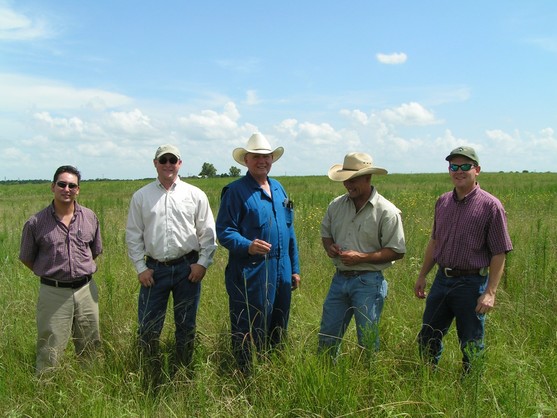 (Left to Right): Robert Perez (TPWD), Jason Hardin (TPWD), Clifford Carter (formerly of The Nature Conservancy), Tim Anderson (U.S. Fish and Wildlife Service), Brian Hays (Texas Land Conservation Assistance Network)
Scaled Quail Declines in the Rolling Plains: In Progress
In 2018 TPWD began a partnership with Texas Tech University and Texas State University to research the underlying factors driving scaled quail population declines in the Rolling Plains. This project, made possible by Pittman-Robertson dollars and matching funds from the universities (totaling over $500,000), is specifically focused on the expansion of woody vegetation (e.g., mesquite, red-berry juniper) into native grass- and shrubland - a growing problem for West Texans - and how it may affect habitat use and populations in the region.
While scaled quail in northern Texas are tolerant of and require some level of shrub cover, heavy brush encroachment can degrade grassland quality and reduce habitat usability. Incorporating cutting-edge technology (e.g., GPS-backpacks, drone imagery) this partnership is taking quail research to a new level and should advance our understanding of how these birds use and move about their surroundings. To date, 26 birds have carried backpacks for the project, collecting nearly 18,000 unique locations. Pairing these data with over 3,000 high-resolution images from drone flights will provide a comprehensive look at how scaled quail utilize the landscape and which features may be affecting and driving abundance. Results from this study will help wildlife and land managers, as well as private landowners, target specific features on their properties and improve management for the charismatic blue quail. Ultimately, we hope this research will help us address and arrest the decline of scaled quail in West Texas.
For more information on the researchers check out a recent Texas Tech Today article and stay tuned for more details on this project in the coming year!
By: John McLaughlin, West Texas Quail Program Leader
Putting Your License and Partner Dollars to Work!
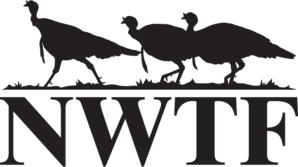
Talk about putting your money where your mouth is - since 2015, the Texas Chapter of the National Wild Turkey Federation (NWTF) has provided nearly $165,000 to TPWD for habitat management on TPWD Wildlife Management Areas (WMA), as well as $7,000 for fire equipment, and $5,000 for development of an R3 strategic plan. These donated funds have been matched with over $500,000 in TPWD grants (Pittman-Robertson (P-R) funding) to affect acres on the Alazan Bayou, Angelina-Neches/Dam B, Chaparral, James E. Daughtrey, Gus Engeling, Gene Howe, Matador, Muse, Pat Mayse, Taylor Lakes, and Yoakum Dunes WMAs. To date, these wildlife areas have received nearly $657,000 for habitat management and treated over 7,200 acres; projects have included the development of firebreaks, application of prescribed fire, brush management, installation of culverts, prairie restoration, and control of invasive plant species.
Recognizing the significant conservation benefits to our wild lands and the hunters of Texas, Quail Forever (QF) Chapters in Texas made the decision to chart their own course and contribute an additional $25,000 for quail and associated habitat work on WMAs this year. Once again using P-R funds, TPWD will be able to match this donation (3:1), meaning another $100,000 for your public lands!
A huge thank you to both of these great organizations!
By: Jason Hardin, Wild Turkey Program Leader
|
Texan By Nature Honors Oaks and Prairies Joint Venture with Conservation Wrangler Designation!
 Oaks and Prairies Joint Venture Board Member Organizations and GRIP Contributors
According to the Breeding Bird Survey, Northern Bobwhites have declined 89% since 1966, with many other grassland birds showing similar declines including Loggerhead Shrike (-92%), Eastern Meadowlark (-74%), Scissor-tailed Flycatcher (-52%), Painted Bunting (-32%), and Dickcissel (-29%). The fundamental cause of population declines has been a landscape-level loss of suitable habitat…think grasslands.
Texan by Nature selected the Oaks and Prairies Joint Venture (OPJV) as a Conservation Wrangler and is working with OPJV to foster the Grassland Restoration Incentive Program (GRIP) to act as a model of landowner engagement that brings grassland conservation to the forefront of thought. Texan by Nature is assisting with marketing and outreach, exploring new funding avenues and business partnership opportunities, and increasing communication capacity to wider audiences.
To stem the ongoing decline of quail and other birds, it is estimated that about 3 million acres of grasslands across the OPJV in Texas and Oklahoma are in need of restoration. OPJV - along with all of its many partners - hopes to one day have helped landowners restore and manage all of them. Currently, over 80,000 acres of native grasslands and prairies of the Texas plains have been restored through GRIP. The working lands within this landscape can be very productive for livestock and birds when properly managed. GRIP endeavors to ensure that there is enough habitat for our wildlife species. For more information, visit www.opjv.org.
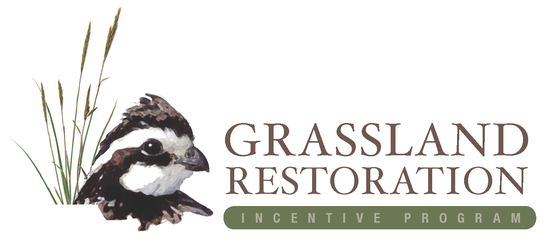 By: Steven Riley, Conservation Delivery Specialist, TPWD & OPJV
Examination of Private Lands Wildlife Management
 Sponsors of the Special Issue of the Wildlife Society Bulletin
The question is: are we doing all we can to encourage private landowners to manage for wildlife? America’s wildlife face mounting challenges in the modern world such as habitat and population fragmentation, climate change, agriculture impacts, energy and development pressures, new diseases and increasing extinction risks. About 74% of the land in the continental US is private land; in Texas more than 95% is privately owned. The importance of private lands conservation cannot be overstated as state wildlife agencies and their partners work to maintain the public trust for wildlife.
So, a small group of experienced leaders in the private lands wildlife management arena, including members of the Small Game Program, decided that a thorough evaluation was needed and that a nationwide conversation should be stimulated. Out of that aspiration, a special issue of the Wildlife Society Bulletin (WSB) - focused on an appraisal of private lands wildlife management - was conceived. The ensuing effort led to the publication of nine related manuscripts in a full issue of the WSB. They explore and critically evaluate private lands wildlife conservation efforts to date.
To foster a national conversation, the organizers and sponsors hosted a reception at the Association of Fish and Wildlife Agencies' 2019 Annual Meeting, including a motivational message of support from several wildlife agency directors and a letter of support from our very own Carter Smith. The reception drew attention to the WSB special issue and invited participants to join an ongoing conversation. Abstracts were provided as well as full electronic versions of the manuscripts. The effort will continue as a part of special symposium at the 85th North American Wildlife and Natural Resources Conference in Omaha, Nebraska in March 2020. At that meeting there will be further dialog and organizers will offer a look forward with new guidance for improving our vital wildlife conservation work with private landowners.
By: Steven Riley, Conservation Delivery Specialist, TPWD & OPJV
Fanning the Flames - Texas Prescribed Fire Council Established
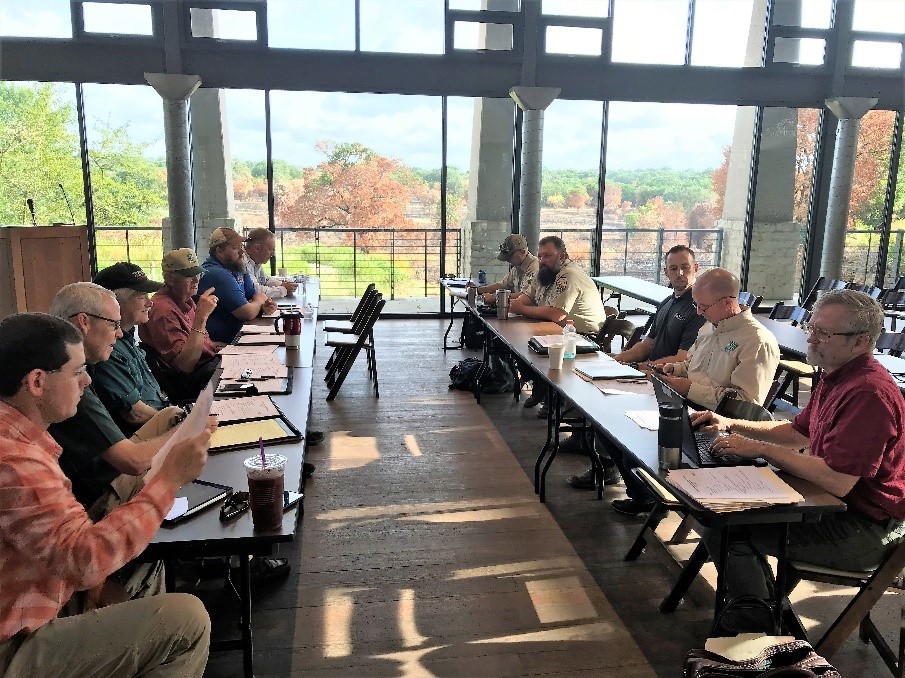 A new partnership of prescribed fire advocates is hoping to change the way we think about fire in Texas and challenge a somewhat undeserved stigma. Historically, Texas grasslands were maintained by periodic fire. However, suppression of natural fire regimes has changed the ecology of the landscape resulting in resource management concerns including woody plant encroachment, increased wildfire risk, reduction of wildlife habitat, and decreased livestock forage production. In 2019, prescribed fire practitioners, planners, and advocates came together to create the Texas Prescribed Fire Council (TPFC). Membership from every region of Texas and from public, private, and non-government entities, along with a newly elected board of directors, are now working to increase the application of prescribed fire. This diverse group is unified by their mutual goals to promote increased use of prescribed fire, represent the stakeholder community, promote partnership, cooperation, and capacity-building, and provide guidance for best management practices applied for natural resource management.
“Every member of the new council knows that what we burn now is just a drop in the bucket compared what we need to do to meet the vast needs of Texas,” said Mort Kothmann, newly elected TPFC Board Chair. “We aim to provide better education and outreach to the public to encourage acceptance for this critical land management tool." We are excited to harness the energy and expertise of this new partnership and thank all those involved in making this council a reality!
For more information on prescribed fire and the Texas Prescribed Fire Council, please contact Mort Kothmann (mort.kothmann@gmail.com).
By: Will Newman, Quail Forever, Contributing Author
Oct. 26: Quail Season opens statewide
Oct. 26: Sandhill Crane opens in Zone A
October - November: Multiple duck and goose seasons begin
Check out Outdoor Annual for all season dates and license requirements!
Nov. 13: Texan by Nature Conservation Wrangler Summit and Celebration
|